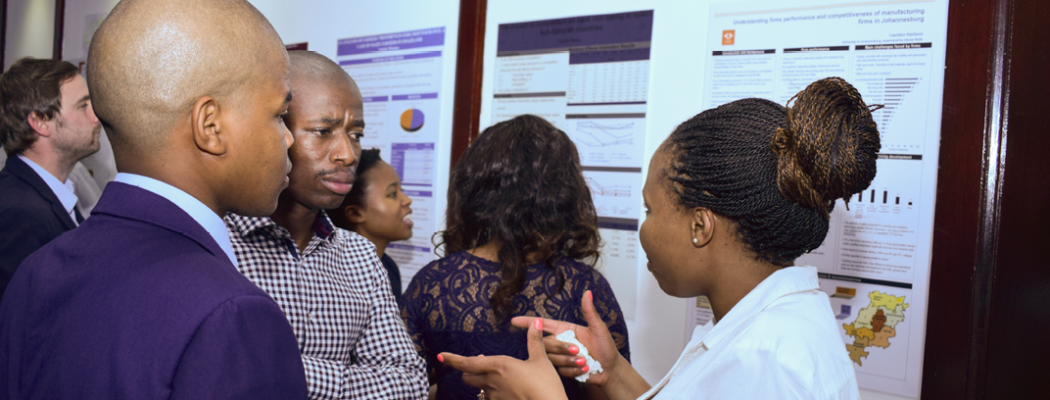Resource misallocation and total factor productivity among SA manufacturing firms
Professor Carol Newman presents the research findings of her team's work under the SA-TIED programme on the impact of resource misallocation on total factor productivity within and between firms in South Africa at the University of Pretoria. Her presentation is part of a three-day visit by the Provost of Trinity College Dublin to promote partnerships between the European University and South African Universities. The trip will also include visits to WITS University, University of Western Cape, and University of Capetown.
For this research, Professor Newman together with John Rand and Mpho Tsebe have used South Africa's firm-level tax data to quantify the total impact of labour and capital misallocation on productivity levels within South Africa's manufacturing sector. The work informs a broader conversation on how capital and labour becomes inefficiently allocated, within and between firms, in the South African context, and the impact this misallocation has on total productivity and, indeed, economic and employment growth outcomes. Professor Newman and her team's work on this issue sheds light on the importance of appropriate resource allocation for generating gains to growth and employment and also on the potential pathways for acheiving these gains more quickly in South Africa.
Carol Newman is a Professor in Economics and Head of Department at the Department of Economics, Trinity College, Dublin. Her research focus is the microeconomics of development with an emphasis on household and enterprise behaviour. She has published widely in the fields of development and agricultural economics and she is engaged in research projects across Africa and South East Asia. She is co-founder of the Trinity Impact Evaluation (TIME) unit, a non-resident senior research fellow of UNU-WIDER, and a consultant to the World Bank. She is a SA-TIED lead researcher for the work stream on Enterprise development for job creation and growth.
This presentation is based on SA-TIED Working Paper #62 now available here.





